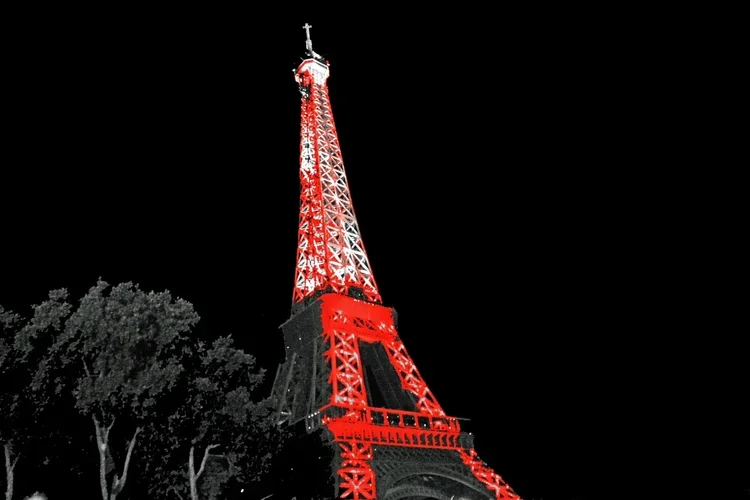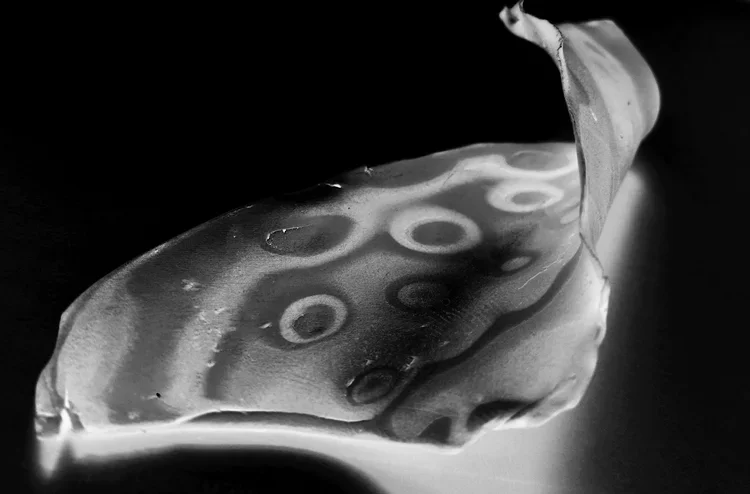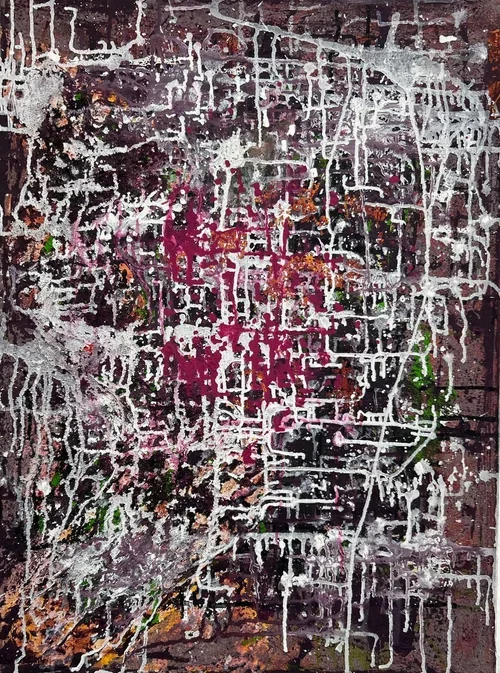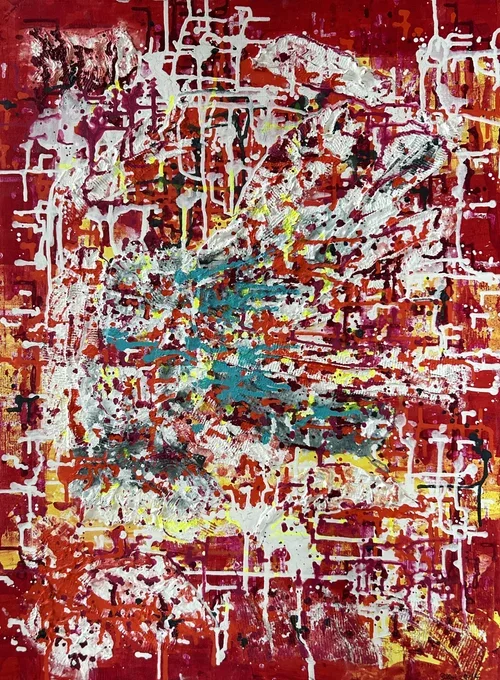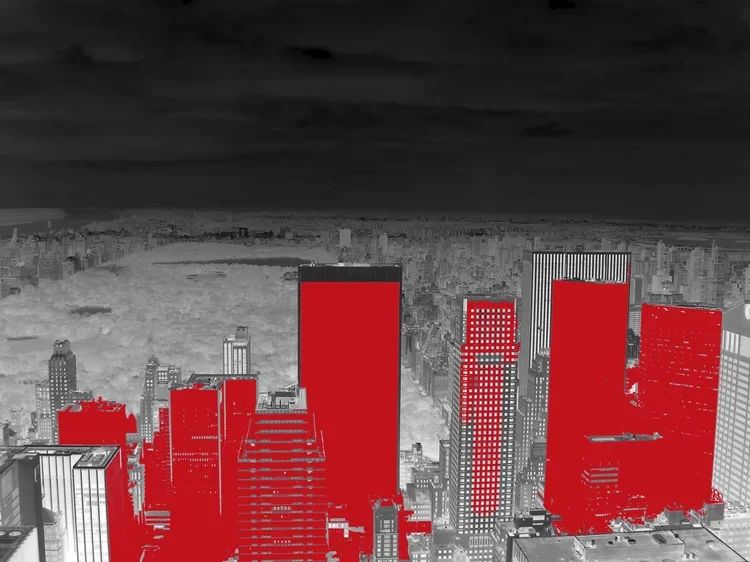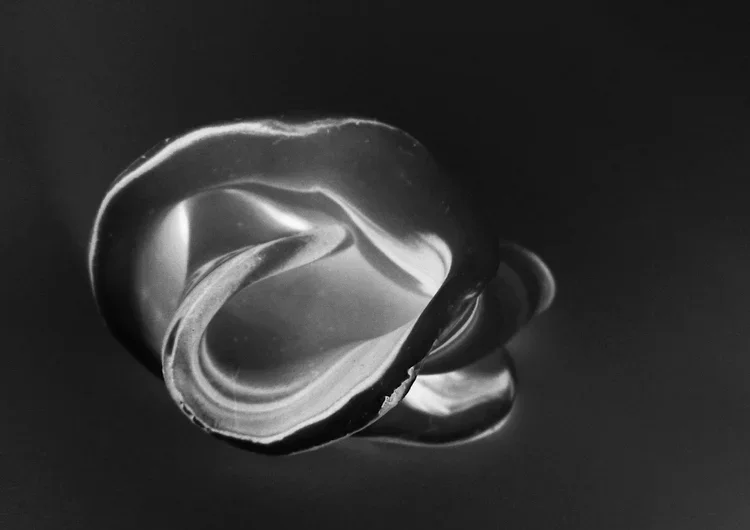Interview
Pilbri - Britta Neumärker
The first works of art in Britta’s long-standing artistic work were Expressionist and Impressionist in character, inspired by her role models Monet, Macke, Münter, Kandinsky, and the entire Blue Rider group. In all of her work, she’s always interested in looking behind the scenes. Since her vision has changed significantly due to her double vision, Britta focused more on the meaning of the content, as well as on seeing as a metaphor in all its facets and everything related to the brain. In doing so, she discovered the brain's ability to visualize and hope as a driving force for people toward a bright future.
What is your background and how did you start your journey in the art world?
“I am a German visual artist with a background in fine art, photography, and art therapy. For over two decades, I have worked as a freelance artist, but my creative journey truly began in a transformative moment — after a severe accident that altered my visual perception. I began seeing the world through a kind of inner lens: not only did my vision shift physically to permanent Double Vision, but emotionally and symbolically, it was as if new layers of meaning were revealed to me. I was completely overwhelmed by the permanent double vision, but my fellow people could not see this. So, I immersed myself in the fascinating world of the brain, its abilities, and the potential for positive and negative influences. I read and listened to countless scientific books on the brain and the topic of neuroplasticity. This rupture became the origin of a lifelong artistic exploration: How do we see what cannot be seen? How do we navigate a world shaped by both visible and invisible forces — trauma, emotion, resilience, memory? These questions still guide my work today. In parallel, my ongoing training in art therapy deepens this approach. It helps me explore the intersection between image-making and psychological healing — not only for myself but also in the way others relate to my work.”
What does your work aim to say? Does it comment on any current social or political issues?
“At its core, my work speaks about perception — how we interpret reality through inner and outer filters. It often deals with themes like the psychology of vision, invisible pain, mental health, isolation, and the resilience of the human spirit. I want to make the unseen visible: not in a literal sense, but emotionally, sensorially, and symbolically. Many of my pieces carry subtle commentaries on social issues, especially around mental health stigma, the silent struggles people endure, and the disconnection in a hyper-visible world. Rather than overt political messaging, my work speaks in whispers — through atmosphere, fragmentation, contrast, and material. It aims to invite reflection and emotional resonance. It speaks with covering or revealing snippets of our soul that influence our active doing.”
Do you plan your work in advance, or is it improvisation?
“Both structure and spontaneity play vital roles in my process. I often begin with an emotional charge or metaphor — sometimes even a word or sensory image that resonates in my body. From there, I may sketch loosely, test materials, or collect objects that echo the theme. But the real magic begins during the making, which is intuitive and process-driven. I allow the artwork to evolve — to surprise me, resist me, and speak back. There’s a dialogue between me and the piece, and often, the final outcome is far from what I first imagined That said, for my Art in Modules and partly my photography I also do conceptual planning, including research, and experimenting with materials.”
“At its core, my work speaks about perception — how we interpret reality through inner and outer filters.”
Are there any art world trends you are following?
“I am deeply interested in the evolving dialogue between neuroscience and aesthetics — how art affects the brain and nervous system, and vice versa. This led me to explore neuroaesthetics and trauma-informed art practices. I also follow trends in conceptual and process-based art, especially works that engage the viewer’s body, perception, or emotional memory. The merging of fine art and socially conscious practice resonates with me — especially when it’s subtle, poetic, and sensory rather than didactic. Additionally, I’m inspired by artists who reclaim or repurpose materials. Moreover, I am interested how AI influence our Life our Art and our Psyche. What is reality what is virtual ? What is virtual art ? Where are the boundaries in between?”
What process, materials and techniques do you use to create your artwork?
“My work is mixed media, layered, and often experimental. I use acrylics, oil pastels, pigments, ink, resin, thread, textiles, glass, found materials, and photography. I’ve also worked with unconventional elements such as ice cream sticks. Technically, I use pouring, dripping, scraping, scratching, layering, burning, stitching, or embedding. I work on Canvas, aluminum plates, acrylic glass plates or thick paper, creating textures that evoke fragility, pressure, or stillness. My photographic work merges with painting in some pieces — in others, it becomes a standalone poetic record of ephemeral impressions. This layered, almost archaeological process allows each piece to carry the traces of time, choice, accident, and intention.”
What does your art mean to you?
“Art is my language for everything that cannot be expressed in words. It is my way of giving form to sensations, emotional turmoil, wonder, and confusion. It is survival—protection and confrontation at the same time. My practice helps me understand my own Inter world while building bridges to others who resonate with it. Especially as someone who lives with heightened sensitivity and carries within me experiences of rupture and healing, art is the only space in which I feel completely at peace—where fragmentation becomes unity, where silence becomes a form of language. My art is intended to contribute to making this world a little better by building bridges to people, by asking questions and making contact, through a colorful palette that considers the gray areas between what is real and virtual, what is true and fake. My art is intended to contribute to creating a positive collective consciousness with which the world and the coexistence of all can become better. Art is the mediator of the unspeakable. Quote: Johann Wolfgang von Goethe. One can only see clearly with the heart. What is essential is invisible to the eye. Quote: Antoine de Saint Exupéry. These are the leitmotifs of my art.”
What’s your favourite artwork and why?
“One of my most personal and meaningful works is ‘Mind Machine.’ This artwork explores the tension between logic and emotion, structure and chaos—between the brain as a physical organ and as a symbolic machine. The work is layered with pigments, embedded elements, and fragmentary anatomical references. There are threads that pulsate like neural pathways and textures that resemble circuits. What's special about this work is that it's not clear where you stand as the viewer: are you looking into something or out of something? What is inside, what is outside? The work thus plays with the problem that we always want to classify something, but in today's fast-paced world, this is precisely what no longer works. Our world today questions everything: what is truth, what is fake? What is reality, what is virtual or imaginary. What world do I actually live in? AI and meta are blurring all the boundaries of classification that once existed. The work ‘Mind Machine’ is simple, yet essential, as its design also demonstrates the blurring of boundaries in art. At first glance, it appears completely abstract, but because it's called ‘Mind Machine,’ an invisible thought machine becomes visible and concrete. This is further emphasized by the small smiley face glued on. A mind machine is invisible, yet everyone has a concrete idea of it. The abstract and the concrete blur. The work speaks of the inner mechanisms we build for survival—how our minds protect, filter, and sometimes imprison us. But it also celebrates the poetry of the brain—its ability to rewire itself, to feel, and to imagine. This work invites meditation and intense reflection on the world and its development, and on what we as individuals can do to improve this world and to maintain hope for it permanently. This can create a positive collective consciousness. Hope begins with a smile, and an honest smile arises with a thought from our mind machine. It's this simplicity that makes this work so special for me. ‘Mind Machine’ isn't just a depiction of the brain, but an invitation to experience it from within. It's deeply autobiographical.”
Have you had any noteworthy exhibitions you'd like to share?
“A particularly meaningful exhibition was my solo exhibition I have developed concerning my double vision : If eyes See different. For this exhibition I have worked several years but it was a very important exhibition for me to control my chaos in my head and in my life. Preparing this exhibition I learned a lot about the function of the eyes and of the brain and it transforms my life. After this exhibition I developed my Art in Modules a constructed and planned kind of art without any disorder. Art with a touch of design. In addition to that I had a period of time with several exhibitions, when I was part of artist Group. With this group I had several exhibitions concerning social and ecological themes. Another important exhibition was my Exhibition: Mystic Stones Stonehenge- dealing with the topic well known places rediscovered.
I have received several awards throughout my artistic career. Most recently, I was honored with the Future of Art Global Masterpiece Award from Contemporary Art Curator Magazine in 2024. In January 2025, I was awarded as Artist of the Year 2025 at the Palazzo Pucci in Florence. Since 2025, I am listed in the directory of investable artists of art market experts.”


